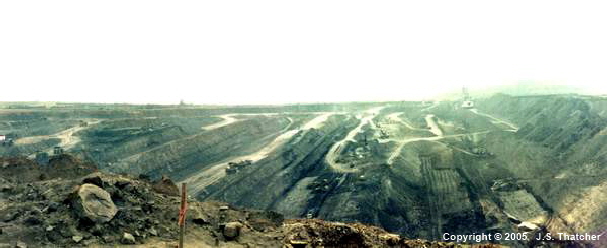Geological > Coal
Section under construction
Contents:
- > introduction
- > the details of coal formation in Britain
- > the details of coal deposition
- > the occurrence of coal in Britain
|
Coal: A general name for firm, brittle and combustible carbonaceous rocks derived from plant debris, but altered, particularly in respect of the volatile constituent, by pressure, temperature and a variety of chemical processes. The various types of coal are classified on the basis of the volatile content and calorific value, together with the caking and coking properties. Coal Measures The geological name given to the uppermost division of the European Carboniferous System. The strata generally consist of beds of coal inter-stratified with mudstones, shales and sandstones together with the occasional limestone. Coal Field The geographical name given to an area containing coal seams. The seams may outcrop at the surface, in which case the coal field is referred to as “exposed”, or they may be covered by other strata, in which case it is known as “concealed”. Coal outcropping at the surface may not be visible due to covering by superficial deposits such as boulder-clay or other glacially derived or wind-blown material. It will, however, usually be visible in stream beds etc. In the North-East of England, coal seams are exposed in sea-cliffs and the coal eroded from them and deposited upon the beaches are said to have given rise to the term “sea-coal” Coal Seams Coal occurs in discrete layers or beds which can vary in thickness from a few mm to 100m. Economically productive beds are known as coal seams and have been given individual names. These names tend to be purely local and the same seam in a different area will usually have a different name. Precise correlation of coal seams between different areas has always been a challenge to geologists. |
||

A sequence of coal seams exposed in a large open-cast site in Northumberland. These seams outcrop in the far distance but are concealed by 10m or more of North Sea drift (boulder clay).
Coal Types:
- Humic ......
- lignite / brown coal
- sub-bituminous
- bituminous
- sub-anthracite
- anthracite
- Cannel ...... (see Wikipedia and Wilson 2002)
- Boghead ........(ditto)
Coal Rank
- lignite / brown
- carbon < 75%
- calorific value: 7000 - 14000 BTU (?? Kcal)
- cannel
- carbon 70 - 80 %
- hydrogen 10 - 12 %
- calorific value: 12000 - 16000 BTU (?? Kcal)
- bituminous
- carbon 80 - 90 %
- calorific value: 14000 - 16000 BTU (?? Kcal)
- anthracite
- carbon90 - 95 %
- calorific value: 15000 BTU (?? Kcal)
Coal Structures
- fusain
- vitrain
- durain
- clarain
Coal Properties:
- ash content
- sulphur content
- iron pyrites
- volatiles
- calorific value
- caking
- coking
Coal Seams worked at Pleasley
- Top Hard
- Dunsil
- 1st Waterloo
- 2nd Waterloo
- Deep Hard
- Piper
Copyright © 2023 J.S. Thatcher
Page updated on:
31 Dec, 2025
In case of problems contact:
at
07:42:50 PM